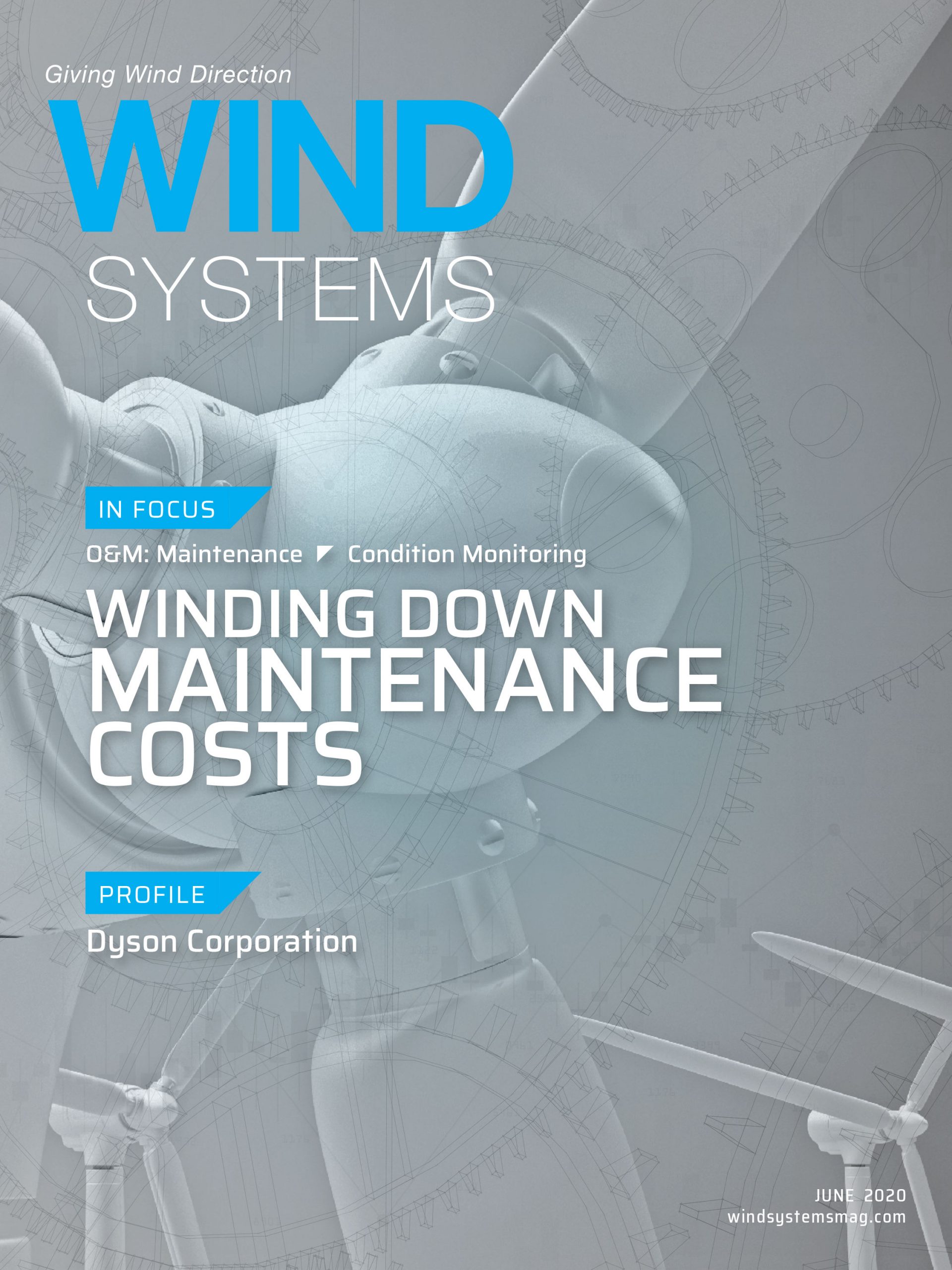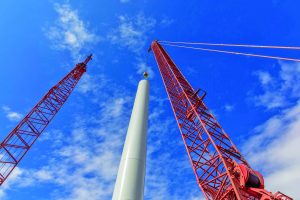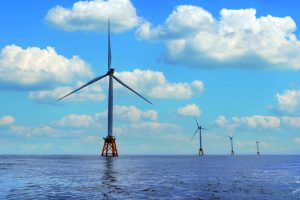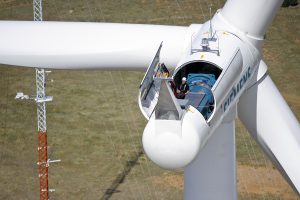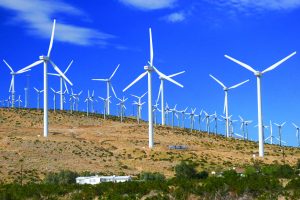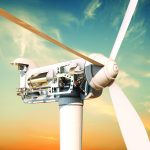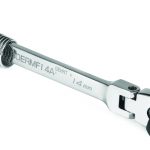As the worldwide installed capacity of wind turbines increases and plays a bigger role in the energy market, so does the need to ensure maximum availability and production of these turbines, together with minimal levelized cost of energy. Machine condition monitoring is important in this respect and many of the new turbines delivered today already have a condition monitoring system (CMS) installed as standard. For offshore wind turbines, all have such a system because of their remoteness for maintenance.
Over the last 20 years, Brüel & Kjær Vibro (B&K Vibro) has installed more than 25,000 data acquisition systems worldwide, with up to 12,000 of these being remotely monitored as a service. As a result of this, B&K Vibro has accumulated a vast database of monitoring data that includes fault data on almost every imaginable potential failure mode.
This is what we call Big Data, which includes both machine vibration and process data under all kinds of operating conditions and with all kinds of wind turbine types and components. What value does this data have?
Statistical analysis depends on Big Data
Big data fits very well into data-driven artificial intelligence (AI) and machine learning (ML) development and implementation, which in turn can further improve the value a condition monitoring solution can deliver. As there are only a few companies that have so much data, B&K Vibro is in a key position to deliver accurate, reliable statistical analysis results using AI solutions.
AI and ML can potentially be implemented for the following condition-monitoring tasks:
- Fault detection optimization.
- Automatic fault identification.
- Prognosis for failure.
Fault detection optimization
Detecting machine faults at an early stage of development is one of the fundamental concepts of machine condition monitoring. The objective is to detect developing faults as early as possible so the lead-time up to the point where operational/productional capacity drops off as the fault develops and is sufficient for cost-effectively planning maintenance up until that time.
The symptoms of many types of developing machine faults can be detected early on by descriptors, i.e. fault indicators, where one or more of these can be configured to one or more potential failure modes. Configuring a descriptor is normally done by a specialist, but fault detection itself is done automatically by the CMS. The individual descriptors and their configuration for fault detection have been optimized to a high level of reliability, repeatability, and early detection by diagnostic specialists with many years of experience.
One of the inherent benefits of AI is its ability to sift through vast quantities of CMS data to find patterns. Important “hidden” diagnostic information can sometimes be found by looking at a lot of historical data in the database. The optimized descriptors represent a good starting point for AI fault detection.
The following AI algorithms have been developed or are being developed for fault detection optimization.
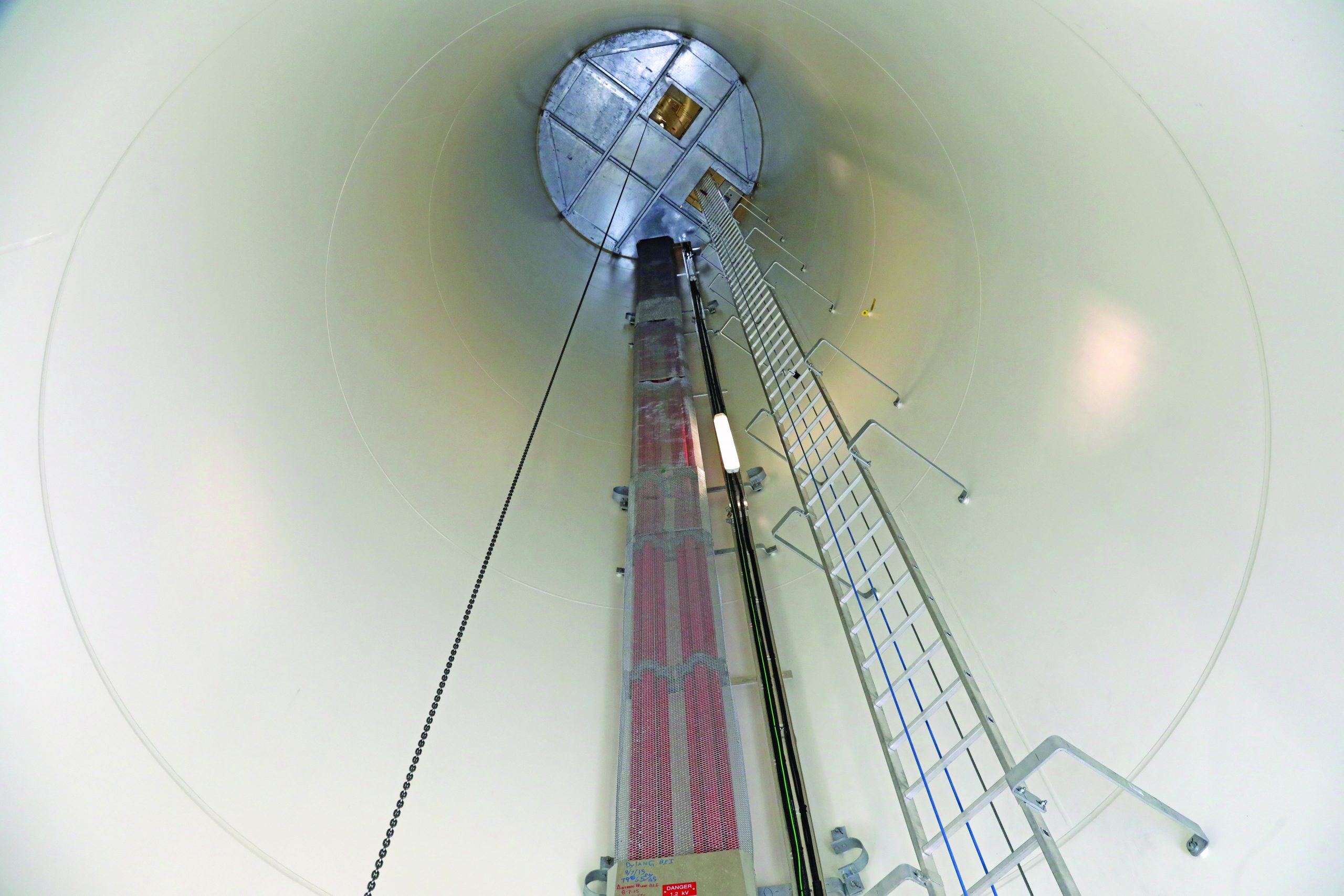
Earlier and more reliable fault detection
Diagnostic specialists use a range of vibration descriptors for detecting a developing machine component fault, such as bandpass measurements (peak-to-peak, RMS), residual value, Cepstrum, high-frequency crest factor, Kurtosis (statistical), proprietary REB measurements, envelope, etc. These fault detection descriptors have been successfully used for detecting bearing, gearbox, and other faults for many years. There are, however, some limitations to this monitoring strategy:
Alarm limits: A developing machine fault is detected only after an alarm limit is violated in a conventional CMS. Although diagnostic specialists can statistically fine-tune the limits to be very accurate for the application, the application is still dependent on fixed limits for fault detection.
Origin of fault: The standard fault detection descriptors measure the general health profile of a component but do not precisely identify the underlying potential failure mode(s). This is normally done by a specialist afterwards.
An AI algorithm can potentially be trained to not only look at individual descriptors, but all measurements at the same time, including process parameters. By looking at a large amount of historical data, a pattern can be found for a group of descriptors that corresponds to a particular fault as it is developing.
Once a pattern is recognized by AI, an alarm is issued. This is possible because an AI algorithm tirelessly analyzes all data to detect seemingly imperceptible changes and trends, therefore resulting in earlier fault detection.
Alarm management has been optimized to a high level in a modern CMS. Despite this, a number of relevant fault detection measurements for a given potential failure mode can all be trending upward, but this condition will never be detected as a developing fault unless one or all of them exceeds the established alarm limit. This is not a problem for AI because it can be trained to look only for patterns, without even looking at fixed alarm limits. The result is earlier and more reliable fault detection.
Another limitation for a conventional CMS is that it often cannot distinguish between spurious process-related high vibration from that which results from a machine health issue. In either case, an alarm will be triggered in a conventional CMS in both situations if alarm limits were violated (after a pre-configured delay, if this was set up in the CMS). For AI detection, the spurious vibration data would be treated simply as outlying data. The result is less risk of false alarms.
Statistical analysis is a focus area for AI development because of the wide scope of benefits that can be achieved. Not only can the power of AI be harnessed for earlier fault detection, but it can be used in many of statistical analysis tasks, such as determining how a specific component is performing over specific operating conditions, reliability of maintenance, regional and climatic influences on component operation and maintenance, fleet monitoring, fine-tuning of degradation models, etc. This would benefit not only maintenance staff but also machine component manufacturers, wind-turbine manufacturers, service providers, wind-turbine insurers, and project planners. Therefore, much research is expected in this area.
Bearing fault frequency detection
As wind-turbine drive train components are almost exclusively supported on rolling-element bearings, bearing defects represent one of the more important potential failure modes to detect and diagnose. Most bearing defects generate bearing fault frequencies unique to each specific component of the bearing because of its geometry, i.e. the inner race, outer race, rolling element, and the cage. If, however, a bearing is replaced during maintenance that is not identical to the original, this will change the bearing fault frequencies, thus complicating fault diagnostics if the diagnostic specialist has not been informed of the switch.
An AI algorithm has been developed by B&K Vibro that automatically analyzes all peaks in a FFT frequency domain spectrum and determines the bearing fault frequencies without input from the wind-turbine maintenance staff. This not only reduces the risk of incorrect diagnostics being done because the maintenance crew did not inform the specialist of a different bearing replacement, but it also eliminates the risk of an incorrect bearing size replacement being reported by mistake.
Speed sensor substitute
Speed reference sensors are used extensively in wind-turbine condition monitoring. Wind turbines inherently operate at a wide range of speeds because of variable wind conditions, and because the gearbox itself has several speeds according to the stages built into it, ranging from the low-speed blade hub up to the high-speed generator. Moreover, many potential failure modes are specifically speed related, such as bearing fault frequencies, gear tooth meshing frequencies, running speed harmonics, sideband spacing, etc. Order-tracking measurements are done to monitor these speed-related frequencies to take into account the variable running speed. If a speed-reference sensor stops functioning, this information is lost, resulting in less reliable or incomplete diagnostics.
An AI function was developed by B&K Vibro that automatically looks at the vibration signature to identify the running speed at all instances of time. In fact, a speed-reference sensor is no longer needed in this situation because this information is extracted from the vibration signature itself. This is a great cost savings for a large wind park with many turbines, where each one requires a speed sensor. It is important to note, however, that only the running speed information is extracted from the data. Phase information is lost if there is no speed-reference sensor, but this information is rarely used in wind-turbine monitoring applications.
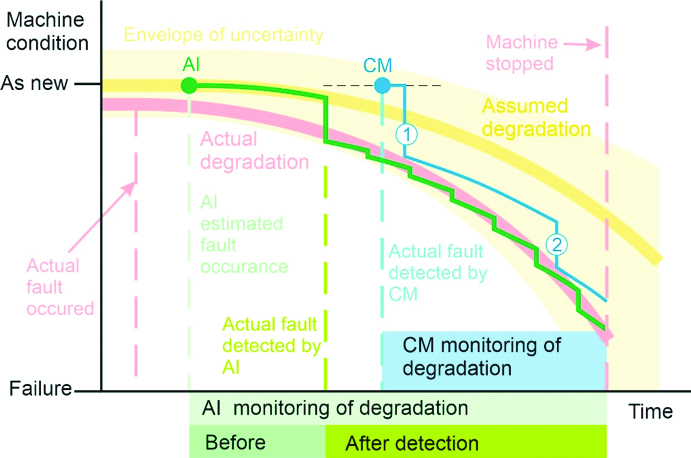
Automatic fault identification
Once informed about an automatically detected anomaly in a machine’s general health profile, one of the first actions of the diagnostic specialist is to try to identify the specific potential failure mode(s) that are developing. The point in time this is done and the amount of time it takes to do it depends on the specialist’s availability, expertise, and resources. There are, of course, a number of diagnostic tasks the specialist has to do in addition to just identifying the developing fault, but these are described in the next section.
The basic rules for identifying a specific potential failure mode by vibration analysis are well documented in the literature and often refined by the specialist through experience.
All this experience can be learned, implemented, and further optimized by AI. As AI is working 24/7, it is constantly analyzing the data, learning from it, and updating the results. AI can present the fault identification results in different ways, but it is typically done as a listing of several possible potential failure modes, each with an individual probability of certainty. This can be optimized with ML.
B&K Vibro has in development neural-network automatic fault diagnostic products in the past, and this remains an area of interest for future refinement.
Prognostics to failure
After a fault has been automatically detected and the specialist has sufficiently identified the fault, determined its severity, and established a trend, the next step is to predict when the component needs to be replaced or repaired with minimal maintenance intervention and without interrupting production. This is called prognostics, i.e. calculating the remaining useful life (RUL) of the defect component. This is the ultimate achievement of any machine health care strategy. It is also the diagnostic task that demands the most expertise from the specialist. The specialist’s successful prognostics, again, depend on their availability, expertise, and resources.
For most rolling element bearing faults under constant operating conditions, the predicted RUL of the component can be fairly accurately estimated by specialists with sufficient lead-time. For planet gear bearing faults and numerous types of gearbox faults, this is not as easily predictable — oftentimes with less lead-time from the time of detection to maintenance. In either case, the prediction is made by the specialist only after a developing fault has been detected.
AI analysis of the data does not start the first day the wind turbine is commissioned, but it will have already started ahead of time by looking at data from other wind turbines from the past. The data-driven prognostic approach uses historical data to create a model that directly correlates the data to degradation and RUL. This way, the AI solution already has an idea on the health of the wind turbine long before the first symptoms of the fault are actually detected. The more data that is analyzed, the more accurate the assessment. Once a developing fault has been detected by AI, the analysis continues to a point where its diagnostics and prognostics analysis is constantly updated using new data. (See Figure 1)
This is certainly a key area of interest for development. It will not only benefit those who currently work with wind-turbine health care from an operational and maintenance point of view, but also long-term planners such as reliability managers.
Conclusion
As can be seen, AI can both support individual condition-monitoring tasks typically done by a conventional CMS and a specialist, as well as support the entire condition-monitoring process up to determining the RUL without intervention from a specialist. From a fault detection perspective, AI can often detect faults earlier using the conventional descriptors and even invent new descriptors after discovering other symptoms or finding “hidden” correlation data that confirm the detection more reliably and earlier. From a diagnostics perspective, AI can, with sufficient data, analyze each potential failure mode of a specific component under all imaginable operating conditions for determining its severity at different points of development — both before and after a fault has been detected. Even the vibration analysis techniques that often are taken for granted can be fine-tuned by AI. The most experienced specialists can never learn as much in a lifetime about fault diagnostics and RUL as an AI algorithm can do within a few minutes, but again it is stressed that there has to be access to the proper quantity and quality of data for this to be achieved. If this is missing or is incorrect, the AI solution will not succeed.
Does AI replace the CMS and diagnostic specialist? The answer is absolutely not, in either case. First of all, an effective AI solution uses CMS data for fault detection and trending to optimize its own diagnostics and RUL calculation, and therefore cannot replace it. Secondly, AI is nothing more than a collection of statistical analysis algorithms, i.e. tools. It is not a finished condition-monitoring solution in itself. As an example, house building tools do not replace the builder, but they certainly help the craftsmen do the job faster, more accurately, and more reliably. The same can be said for AI tools. They help the specialist perform diagnostics and prognostics but do not replace the specialist out right. In fact, in addition to requiring the right quantity and quality of data to be effective, AI also requires a lot of support from the specialists. It requires the expertise of both data scientists and diagnostic specialists to properly program these tools and gain maximum benefit from them.
When all these requirements are met, AI provides an enhanced condition-monitoring solution as the end result.
















